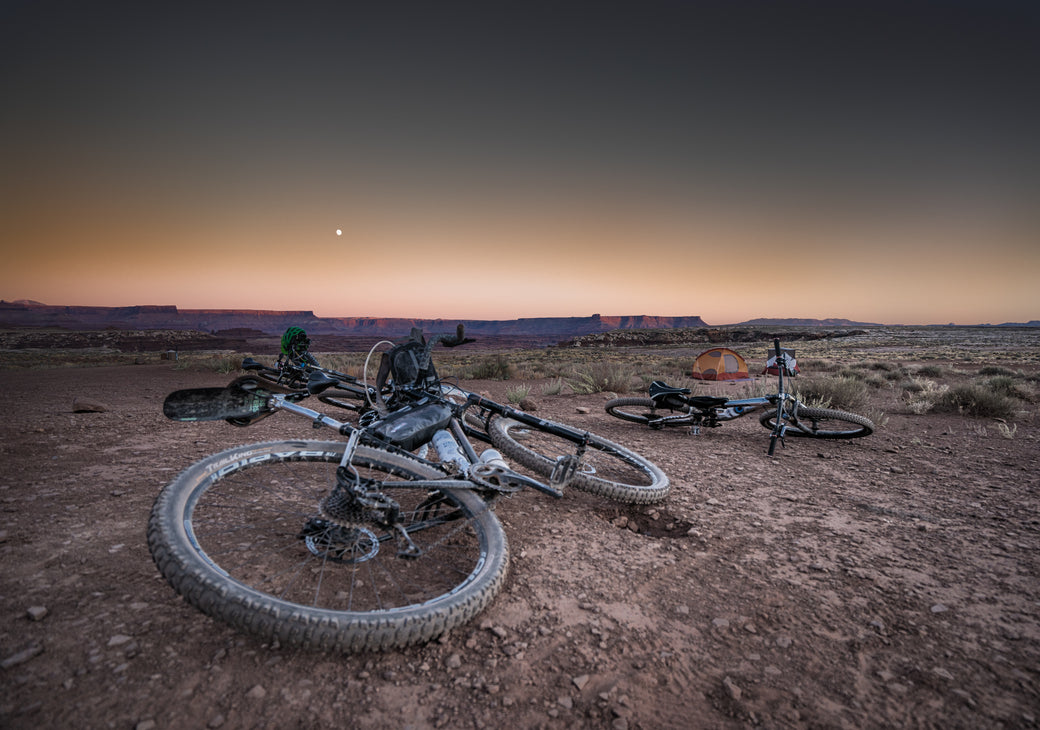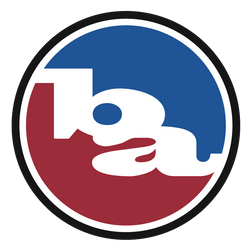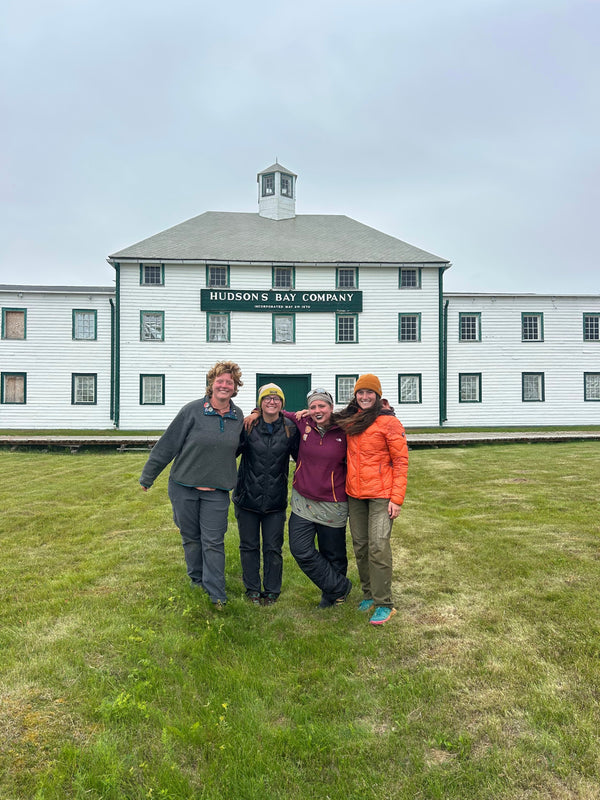Our group of seven converged from many different states out onto the dirt at the junction of Mineral Bottom Road and the 313 in Utah. We set out on October 10th, intending for three nights camping and four days of biking. The White Rim in Canyonlands National Park seemed like the perfect re-introduction to a multi-day experience. Having just two out of four working limbs, adventuring is a little more labor intensive, both participating in and planning for. This trip was an intentional return to the backcountry, having sustained my spinal cord injury in a rock climbing fall October 11th, 2017.
My legs are paralyzed and I use a wheelchair full-time. Fitting into any bathrooms, navigating the smallest of barriers and general daily tasks can be overwhelming to say the least. The White Rim is the ultimate 100 mile dirt jeep road that has also become a famous bike route. It is outfitted with adequately spaced campsites, ADA accessible pit toilets at each campsite, and allow for support vehicles with 4×4 capabilities, like ours. Logistically, it was perfect. I only wanted to use my wheelchair at camp, while I intended on biking the route with either of my two off-road adaptive hand-cycles, one being battery powered. After heaving all of our desired gear into the dirt, we loaded the support truck to the brim with beer coolers, food coolers, tents, sleeping kits, frisbees and camp tables.

https://www.hennataylor.com/ @hennataylorfilms
The first day’s mileage to the campsite had us biking about 27 miles total. The views were surreal, descending into the maze of purple, red and pale pink canyons before us. We traversed around one layer, the aptly named White Rim, like we were traversing the outline of a cog on a wheel, in and out of natural arches and spires all while holding views of both higher and lower grounds.
On Day 2, the only available campground was a mandatory 45 mile jaunt. Our biggest day, but the only way I would have wanted to spend the two-year anniversary of my accident, with these incredible friends underneath the desert sun. We biked, we giggled, and we drank beer with many site-seeing snack moments in between. We arrived to camp with sunlight to spare. It was a big day for most riders considering the physical demand on their legs alone. Had I not brought my e-assist bike, my arms would have been pretty useless for the glow in the dark bocce ball tournament and other more important tasks around camp that night.

https://www.hennataylor.com/ @hennataylorfilms
We settled in at one of the lower points on the route, by the shores of the Colorado River. The cold sunken air had us nestled into our tents until late the following morning. We had a casual 10 miles to span on Day 3, with the flexibility of checking out some side trails. Unfortunately, one of our side adventures led us to a narrow cliff-side trail in view of the ruins, and my 36” wide hand cycle became a big disadvantage. I was piggybacked some of the way but unable to enjoy the ride over areas with loose footing, not to mention putting my friends in awkward spots just so I could explore a little further. We turned back and opted for a soak in the crispy Colorado River.
Day 4 brought on the crawl back out of the canyon lands and back to the Island in the Sky. Switch back after switch back you worm up the side of a cliff band and eventually to a longer sage brush scenery push back to the start of the journey. I felt tired, I felt loved, and I felt a small semblance of my former long-adventure-day-loving self. My hands were disgusting, brown and cracked, but they were traveled. I can’t wait to scheme up another bike journey and perhaps figure out how to make a lighter and semi-collapsible wheelchair so no support car is needed.
Biking is a saving grace for me, and this injury. Traversing the earth again, keeping a similar pace with my able-bodied friends and just being outside all day again exerting energy and soaking up the sun was a beautiful return to the backcountry.

https://www.hennataylor.com/ @hennataylorfilms
About the Author: Alpine Climber Quinn Brett sought to travel and climb mountains throughout the world, reveling in the freedom of movement but also advocating for safe keeping of these special places. She worked as a climbing ranger Rocky Mountain National Park, technical rescuer and medical provider. This intimate work within public lands also opened opportunities to spread a need for stewardship within the recreational community. October 2017 she took a big fall while rock climbing in Yosemite National Park, causing paralysis below the navel. Her drive to cover long distances over technically complex terrain continues, so does her advocacy and adventure love for wild spaces. You can follow Quinn on Instagram at @quinndalina or read more about Quinn’s latest projects and adventures at quinnbrett.com.


 English (EUR) | EN
English (EUR) | EN 


